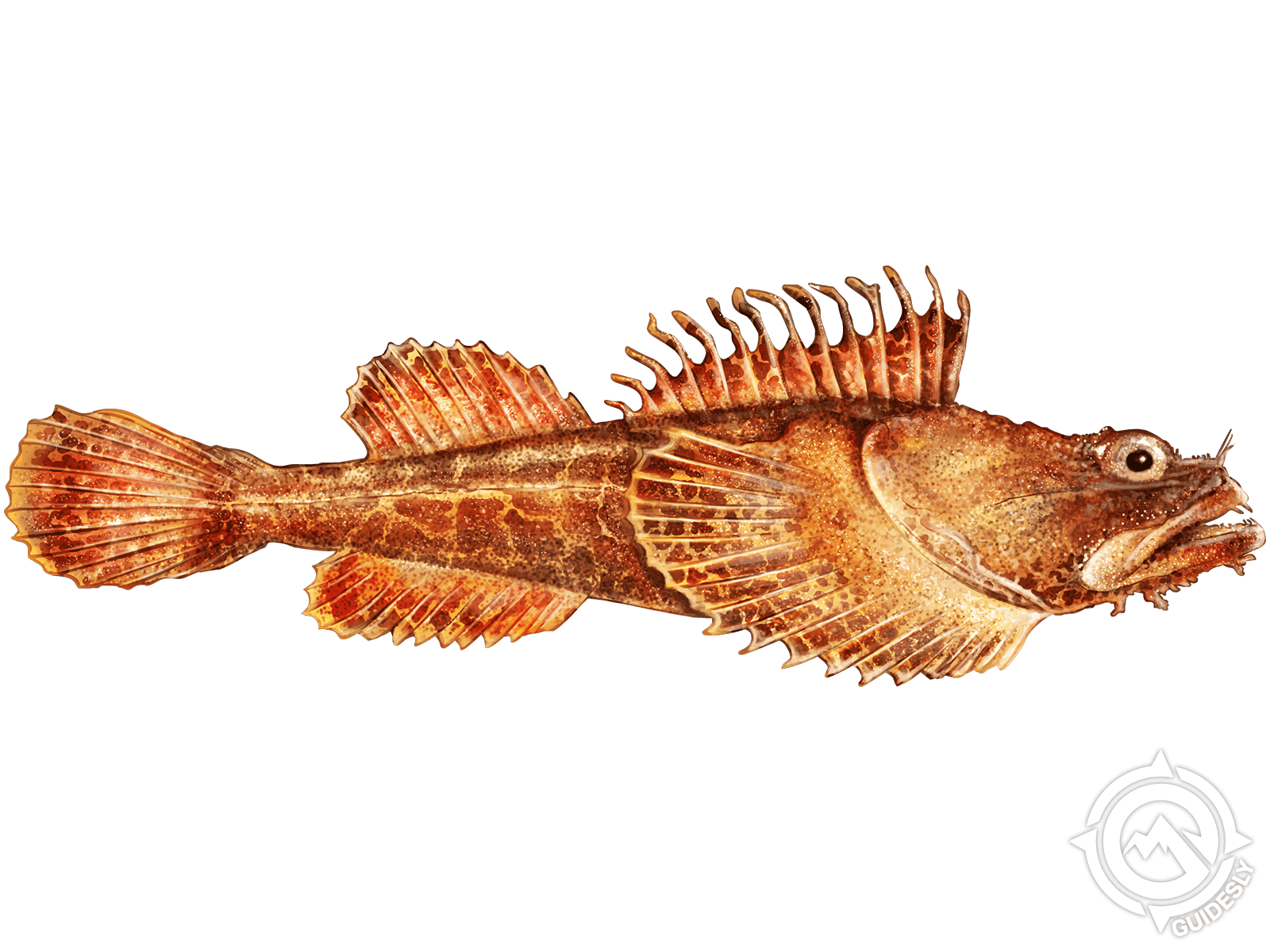Bigmouth Sculpin

Species Details
Hemitripterus Bolini
Hemitripteridae
Scorpaeniformes
Offshore, Deepwater
10 - 30 lbs.
12" - 36"
Bigmouth Sculpin (Hemitripterus bolini) Fish Description
The Bigmouth Sculpin is one of the most grotesque fishes out there. Not a lot of anglers are enthusiastic about catching them. Like the Buffalo Sculpin, this fish species is considered weird-looking.
Its body is either brown or mottled gray; the top part is more vibrant compared to a lighter shade below. It has around four or five darker saddles across its back and two tan stripes across its head. Its spinous dorsal fins (which can be as much as 14 spines) have a mottled red-brown color on its membranes and a lighter shade between the fifth and eight spines.
Its anal fins are light gray with orange patches and subtle black speckles, while its pectoral fins have bands of alternating colors of yellow-brown, light gray, and dark brown. On the other hand, its caudal fins are dark reddish-brown with gray-brown vertical stripes.
Interesting Facts
- It is often interchanged with Hemitripterus villosus, also called the sea raven.
- The Bigmouth Sculpin is cannibalistic and would eat its own kind.
- Smaller Sculpins can be great bait for trout and other bigger fishes, such as the big mouth bass and pike.
- Bigmouth Sculpins fertilize internally.
- A female Bigmouth Sculpin deposits its eggs into sea sponges. While this is still under a series of research, researchers hypothesize that sea sponges may serve as habitat and refuge for this species.
Diet and Size
A Bigmouth Sculpin feeds on small crustaceans, insect larvae, eggs, shrimps, and smaller fishes, including smaller sculpins.
The average size of a Bigmouth Sculpin is 1.6 feet and can grow up to two and a half feet long.
Fishing Techniques: How to Catch a Bigmouth Sculpin
There is only a little information about Bigmouth Sculpins and not much information about how to catch them. They are often caught as by-catch of heavy tackle fishing or commercial trawling.
However, if you want to catch one, you can catch them like how you catch a Halibut: deep-sea fishing. A Bigmouth Sculpin won’t usually give you much of a fight, but since they can be huge creatures, it is good if you prepare a medium-weight tackle with you. You can use live fish as bait, but an artificial one is a good option. Use colorful lures to attract them.
Since this fish is a bottom-dweller, use just about the same gear you would use in deep sea fishing for other fishes.
Habitat and Distribution
The Bigmouth Sculpin is found throughout the Gulf of Alaska to Canada and Northern California. But they are more abundant in the Bering Sea. It’s found in depths 300 to 900 feet.
Not much is known about the reproduction and inhabitation habits of this fish species. The only clear information is that they stay offshore in deep waters and prefer to stay over rocky and muddy ocean floors. They also prefer cold temperatures as low as 29 degrees Fahrenheit.







